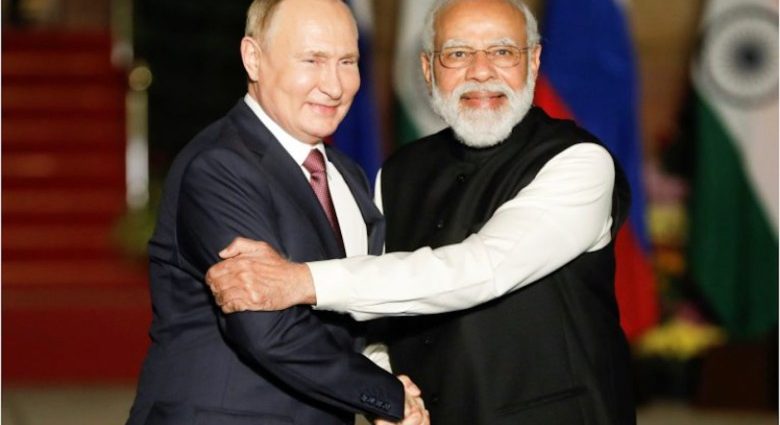The US is seeking to woo India away from Russia by dangling its most advanced combat aircraft, playing on India’s need to keep pace with rival Pakistan and China’s rapidly modernizing air forces.
For the first time, the US this month brought its most advanced combat jet, the F-35, alongside F-16s, F/A-18s, and B-1B bombers to this year’s Aero India Defense Show held in Bengaluru, India, Reuters reported.
This year’s US delegation was the largest in the show’s 27-year history, an indication of the two sides’ growing strategic relationship, the Reuters report said. Russia, India’s largest arms supplier since Soviet times, had a nominal presence at the event, with its exhibit limited to miniature models of aircraft, tanks, radars and trucks.
Despite Russia’s limited presence, Reuters mentions that Russia has supplied US$13 billion worth of arms to India in the last five years, with India placing orders for $10 billion over the period. In contrast, the source says the US has approved $6 billion worth of arms sales to India in the last six years.
It was not the first time the US has tried to woo India out of its longstanding dependency on Russian arms. Asia Times reported this month that the US-made F/A-18 is a contender for India’s carrier-based fighter program, competing against the naval variant of France’s Rafale, whose land-based version already is in service with the Indian Air Force (IAF).
Furthermore, in February 2019, Business Insider reported that the US offered its F-21 fighter as a contender for India’s Request for Information (RFI) for 110 fighters in a potential arms sale worth US$110 billion.
The report noted that the F-21 appears to be an enhanced F-16 Block 70 upgraded with F-22 and F-35 fighter technologies, specifically its APG-83 active electronically scanned array (AESA) radar, which shares hardware and software components with the F-22’s APG-77 and F-35’s APG-81.
Although the F-35 is a capable fighter jet, it may not meet India’s particular needs. In a June 2020 blog entry, Harun Aydin mentions that the F-35’s optimization for deep strike missions does not fit India’s military doctrine, which emphasizes border defense.

In addition, Aydin says that the F-35 was designed with US requirements for an offensive stealth aircraft to penetrate defended enemy airspace and is overpriced for India’s relatively limited defense budget.
He notes that for the price of a limited number of F-35s, India can acquire a substantial fleet of capable 4th generation fighters such as the license-built Russian Su-30MKI and French Rafale that can perform beyond-visual-range (BVR) engagements in border defense operations, dogfight enemy fighters and still have enough funds left over to develop its own 5th generation fighter.
However, even with the reduced cost of 4th generation aircraft, Aydin notes that India was forced to scale down its order of Rafale fighters from France due to cost issues.
In a 2011 Carnegie Endowment for International Peace (CEIP) report, Ashley Tellis mentions that India has declined previous US offers of F-16s and F/A-18 Hornets for various reasons. For one, Tellis mentions that in a contingency with Pakistan or China, the US could potentially “pull the plug” on parts, munitions and aircraft when India needs them most.
He also points out that India’s decision not to pursue US fighter jets could be a tacit protest against America’s long-time arming of Pakistan. In September 2022, Asia Times reported that the US approved a US$450 million upgrade package for Pakistan’s aging F-16 fleet, which includes engine and hardware modifications and support, classified and unclassified software as well as software support.
The US decision to upgrade Pakistan’s F-16s may be an underhanded US move to signal its displeasure to India for its continued purchase of Russian oil during the ongoing Ukraine war.
Tellis also notes technology transfer issues as impacting India’s decision against US fighters, noting that European aerospace firms are more willing to share technology than their US counterparts.
Asia Times reported in March 2022 that the Mk2 batches of India’s 5.5 generation Advanced Medium Combat Aircraft (AMCA) will be powered by an indigenously-produced 110-kN class engine co-produced by India’s Defense Research and Development Organization (DRDO) and French aerospace firm Safran.
That could still change, however, as this month, The Hindu reported that the US is considering General Electric’s application to produce GE-414 engines in India to power the latter’s Light Combat Aircraft (LCA)-Mk2 and AMCA projects.
Moreover, Tellis has noted India’s desire to maintain its strategic independence as a critical factor in its reluctance to acquire US jet fighters.
The premise of US arms sales is that clients join a US-dominated logistics train in exchange for maintenance, technical support, better pricing and more options for purchase, but in effect, surrender large parts of their foreign and defense policy to US interests.

In contrast, Russia claims its arms sales are free of political strings attached, which makes them an attractive option for India. In line with that, Tellis notes that India wants to cooperate with the US as a partner rather than a client, noting that India sees the US as one of several strategic partners and not the only one that counts.
However, the ongoing Ukraine war has raised doubts about the quality of Russian arms, the possibility that arms orders for foreign clients may be redirected to replace Russia’s losses on the battlefield and whether Russia’s defense industry can still deliver under sanctions.
In that connection, Asia Times reported that in March 2022 India placed an order for 12 Su-30MKI fighters from Russia. However, it suspended its order two months later due to concerns about Russia’s ability to deliver parts and payment issues.
India may thus need help with its fighter acquisition program. However, there may be better solutions than the F-35 to meet India’s need to match China and Pakistan, diversify its arms providers and keep its indigenous fighter program on track while maintaining its cherished strategic independence.

